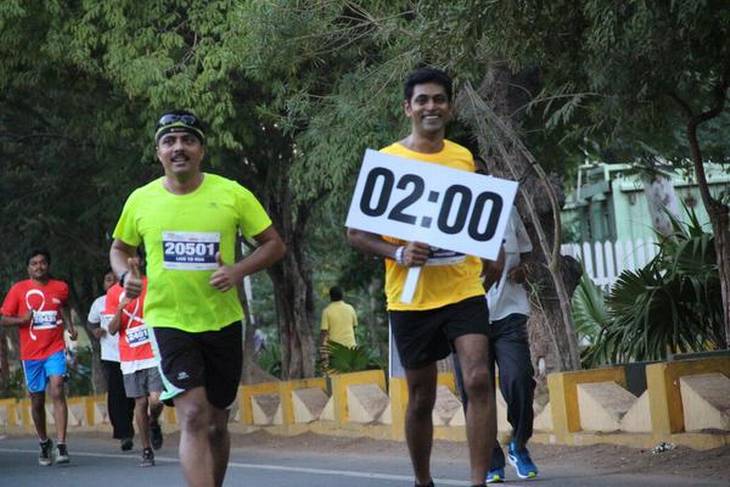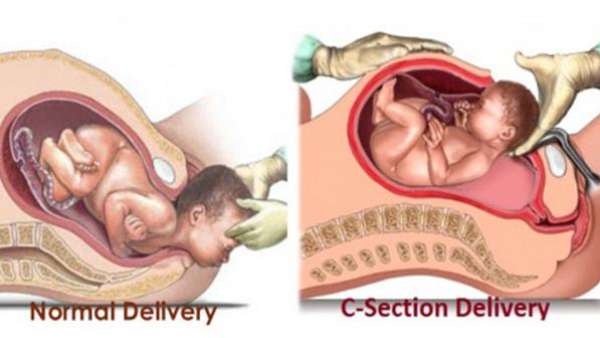
Keeping pace is an art
Seasoned marathoner Pratheep Jagannathan on the duties of a pacer “Four, three, two, one ... beeeep WALK!” We keep an ear out for Pratheep Jagannathan’s quiet command. He is training us for the upcoming Coimbatore Marathon event. Some of us have pulled on running...
read more
Can I Have A Normal Delivery After C Section?
It is said that "once a cesarean, always a cesarean". It is commonly believed that a woman who has undergone a c-section delivery will have to opt for the same method while giving birth to her next child. But medical experts are trying to dispel this myth. According...
read more
Freezing eggs gives 60 per cent success rate in pregnancy
Freezing of embryos in IVF has been found to give a 60 per cent success rate in pregnancy, but two factors also play an important role the age of the mother and the ability of the embryos to take the stress of freezing. This method has been practiced in the West and...
read more
Why you can never be complacent about your cell phone
In the old days, people went to the U.K. to lose their virginity; nowadays they go to lose their cell phones. Well, that wasn’t my intention, but that’s how things turned out. One moment I was walking down Portobello Road, not a care in the world, and the next I...
read more
Capri like a local
Here is where you need to go the next time you are in this picturesque getaway It’s not every day that I find myself shopping in the same store as Luca di Montezemolo, the former chairman of FIAT and Ferrari, and his wife, but that’s Capri for you. Beyond stylish, the...
read moreNew study suggests routine testing for prostate cancer could be dangerous
Washington: Routine testing for prostate cancer is not recommended for most men as the benefit is small and uncertain and it also has a number of harmful effects, suggest experts. Acknowledging that some men, such as those with a family history of prostate cancer, may...
read more
Yes, you GAIN weight during periods. Know why!
1/5Finally, an answer! FINALLY, AN ANSWER!: Do you feel that your pants get a slightly tighter during 'that' time of the month or that suddenly you start feeling a little (or a lot) heavier than normal? Well, the good or bad news--as you wish to take it-- is that you...
read more
How chai arrived in India 170 years ago
Britain’s first taste of tea was belated — the Chinese had been drinking it for 2,000 years. The English diarist, Samuel Pepys, mentions tea in his diary entry from September 25, 1600. “Tcha,” wrote Pepys, the “excellent and by all Physicians approved, China drink,”...
read moreHow I learnt resilience
When the small manufacturing business that I ran collapsed and it happened twice in quick succession, I was distraught and overwhelmed. I sought counsel yet it did not help. However, perhaps through some quirk of fate, I survived and in time, as a psychologist said, I...
read more
Top Kofi Annan Quotes
Kofi Annan (80), a diplomat from Ghana, who rose to become the seventh Secretary General of the United Nations, passed away after a brief illness at a hospital in Switzerland today. Annan, who was the secretary general of the UN twice between 1997 and 2006, was...
read moreKeeping pace is an art
Seasoned marathoner Pratheep Jagannathan on the duties of a pacer
“Four, three, two, one … beeeep WALK!” We keep an ear out for Pratheep Jagannathan’s quiet command. He is training us for the upcoming Coimbatore Marathon event. Some of us have pulled on running shoes for the first time, but Pratheep is reassuring and gentle as he puts us through our paces. For a month now, four days a week, our running group at GV Residency receives a WhatsApp from him saying “Run Tomorrow. Start Time 5.45 am. 5K run-walk. Please confirm your participation.”
Forty-two-year-old Pratheep, a seasoned long distance runner is also a treasure trove of information on all things running. Every day we learn something more from him and today it is about Pacers. Pratheep is, perhaps, doing the pacer’s job with us, as he modifies his speed, keeps time and encourages us along. As we run, he explains in detail about these people who egg runners on to complete a run honourably. “A pacer should look and feel confident in his pacing, should engage the runners, motivate them and be cheerful. It also helps to be able to tell stories and distract the runners from their struggle,” explains Pratheep who does all of the above!
Pacers are experienced long-distance runners who run at a set pace or speed to finish a race in a specific time. “If you have registered for a 10 K running event, ensure you set a realistic time frame to finish that race,” he advises. “So if you want to complete the distance in one hour fifteen minutes you should know at what speed to run and how to maintain that speed to achieve your goal. A pacer will help you do just that.”
With the approaching Coimbatore Marathon , the avenues and parks in the city are reverberating with the thud of running feet. Young and old have dived in and pacers can help them stay on the straight and narrow on the final day. As runners in each category may have different paces, organisers try and provide different pacers for them. “For instance, a Half Marathon (21.1Km) race can have 1:50, 2:00, 2:15, 2:30 pace groups with one or more pacers in each finish time.” Interestingly, the pacers’ assigned finish time is termed “Bus”. Pacers wear specific coloured T-shirt or carry a placard or balloon with the finishing time on it! Pratheep has been a pacer in a couple of events. “Once for the 2:00 Hour Half Marathon Bus for the Coimbatore Marathon and once for 2:15 HM Bus for Chennai Marathon,” he says.
One often feels like apologising to Pratheep, as it must be pretty underwhelming for him to run with slow coaches like me! He has a formidable track record of three ultra marathons ( 2015 CTC Trail Ultra – 50 K (6:57:18), 2016 Jawadhu Hills Ultra – 50k (5:38:26) and the 2018 Kodai Hills Ultra – 80k (13:00:28). He has signed up for the upcoming 2018 Malnad Ultra – 110K. He won second place at the Chennai Triathlon 2016-Olympic category where he swam 1.5K, cycled 40K and ran 10K all in 3 hours 11 minutes and 56 seconds. He has more than 50 half marathons and more than 10 full marathons (his best full marathon timing is 4:06:20).
But he assures us that it is the job of pacers to tailor their speed and be able to hold a conversation while pacing. “They should be able to plan their average pace and know at what time they should have completed a certain distance at various stages of the race. They need to adjust the pace according to changes in elevation.”
“ Keeping Pace is an Art,” states Pratheep. “There are several nuances to to it and, one gets better and better with every event.”
One step at a time
Set a realistic goal (Usually it is five to 10 minutes faster than their previous bests)
A pacer’s job is to act as a marker for you and help you finish the race at the set time
A designated pacer will not slow down nor speed up to any individual. Some participants may slow down and drop off the bus, not being able to hold their pace; others may have underestimated their capability and may finish ahead of time. Some may join the bus in the middle of the race
It is not necessary to run with the pacer beforehand, but it is advisable to run at your target pace during training
On the day or even before runners can have a quick chat with the pacers. One can join a pace group on race day or even during a race. There are no formalities and runners are free to choose. One can even change among different pace groups during the race
A serious runner can hire a personal pacer and train with him/her
Info you can use
The sixth edition of the Coimbatore Marathon is on October 7, 2018
Last date to register is September 7, 2018
Registration fee is ₹800 for 21.1 and 10K and ₹550 for 5K. Students get a discount of ₹100
Can I Have A Normal Delivery After C Section?
It is said that “once a cesarean, always a cesarean“. It is commonly believed that a woman who has undergone a c-section delivery will have to opt for the same method while giving birth to her next child. But medical experts are trying to dispel this myth.
According to them, Vaginal Birth After Cesarean, commonly termed as VBAC, can be adopted by any mother for her second or third birth if she wishes to avoid the complications of c-section delivery.
“Any woman with a previous caesarean section can attempt a VBAC. The majority of women, despite having a c-sect delivery, often prefer a vaginal delivery. Women are showing more courage towards this. It is safe and the established hospitals are providing full support to mothers who plan to go for a vaginal delivery,” Dr Mukta Kapila, Director, Obestrics and Gynaecology, at Fortis Gurgaon, told IANS.
Dr Rinku Sengupta, who had been associated with the Sitaram Bhartia Institute of Science and Research as Maternity Programme Head, said that in recent times two out of three women with a previous c-section deliveries attempt a VBAC and almost 90 per cent of them are successful.
“Only pregnant women above the age of 40 are more at risk for stillbirths and unsuccessful VBACs. Careful consideration should be given to the timing of delivery in these cases,” Sengupta said.
Sengupta explained that obesity is also a factor that could potentially increase the risk of uterine rupture and this can be a limitation for VBAC. She also pointed to a study that 85 per cent of normal weight women (BMI 18.5-24.9) achieved successful VBAC, while only 61 per cent of morbidly obese (BMI 40 or more) women achieved VBAC.
Kapila said that before opting for a VBAC, the history of the previous delivery needed to be considered.
“Under which conditions and circumstances, a caesarean was conducted — in emergency or breach — first needs to be identified. The mother, planning for vaginal delivery, should at least maintain a minimum gap of two years before opting for the second or third child,” she stated.
Often c-section delivery leaves a scar in the uterus, which, according to the medical experts, is a vital factor to be considered before they suggest a VBAC. According to the American Congress of Obstetricians and Gynecologists (ACOG), some uterine scars (such as vertical scars which are now rare) are more likely than others to cause a rupture during VBAC.
“Therefore, it is important to show medical records of prior cesarean delivery so that doctors can assess viability for a VBAC in case of increased risk of uterine rupture. Sometimes women are discouraged from trying for a VBAC because of a thin scar,” Sengupta noted.
However, when it comes to vaginal delivery, the first thought that crosses most womens’ minds is of the labour pain which develops a fear of the VBAC.
“Everyone knows that labour is painful and even an epidural injection cannot make labour 100 per cent pain-free. But with proper physical and emotional support, continuous one-on-one presence of a skilled care provider or birth partner, and use of natural methods like warm showers, massages and exercises, most mothers cope very well with labour pain,” Sengupta explained.
Also, the fear of labout pain, according to the experts, can be dispelled by timely counselling and talking about the benefits and less risk involved in VBAC. Yet, there is always the chance that a VBAC might be called off at the last moment even if the mother didn’t face any complications during pregnancy.
“A doctor may suggest an emergency c-section if complications occur during labour. If the baby is not able to tolerate labour or the contractions aren’t effective in moving the baby down the birth canal, then a cesarean may be the best way to deliver the baby,” Sengupta explained.
Kapila said that it is the patient’s decision that gets greater priority. “There is no point in pushing a mother for VBAC if she is not mentally prepared or feels scared or delivery complications arise at the last moment. Although the doctors will recommend vaginal birth, the patient’s life cannot be put at risk,” Kapila said.
Freezing eggs gives 60 per cent success rate in pregnancy
Freezing of embryos in IVF has been found to give a 60 per cent success rate in pregnancy, but two factors also play an important role the age of the mother and the ability of the embryos to take the stress of freezing. This method has been practiced in the West and also in Indian fertility clinics, but the two factors play a crucial role in allowing it to be a successful pregnancy.
Senior Infertility Specialist at Rainbow Hospitals, Dr Preethi Reddy G. explained, “Frozen embryo transfer is also called segmental transfer which is being practiced since a decade. In India too, this facility is available in the registered and specialized IVF centres. There is better pregnancy outcome with frozen transfers compared to fresh ones which are found at the clinical level too. The reason for doing this is that in frozen transfers the embryos are exposed to more natural environment in the uterus and hence the outcome is better. But not all embryos are able to withstand the stress of freezing and that is a major hitch. When we find that they cannot take it we have to transfer fresh embroys only.”
Senior infertility specialist, Dr Radikha Reddy explained, “While these techniques are available, the age of the woman also is an important factor in the success rate of pregnancy. In a woman, who is 28 years of age the outcome would be good in either frozen or fresh transfer rather than a woman who is 38 years of age.”
With IVF becoming a main line of treatment for infertile couples, the success rate of the procedure is a major concern which is evaluated between 41 to 60 per cent.








